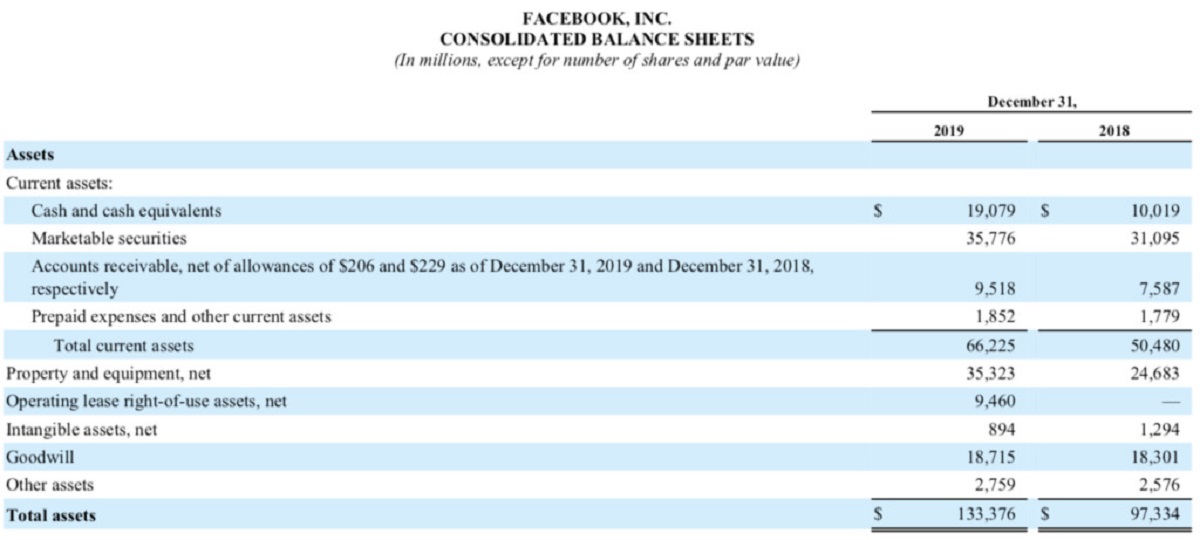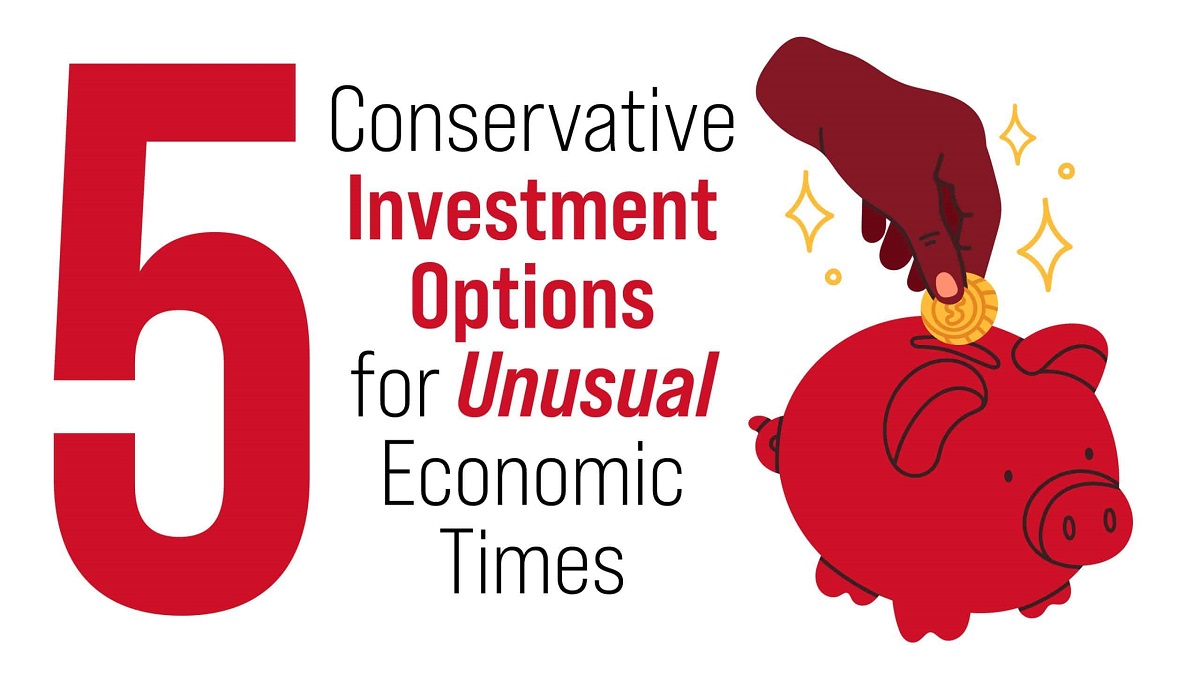Introduction
Fintech, short for financial technology, is revolutionizing the way we conduct financial transactions and manage our money. From mobile banking and digital payments to robo-advisors and blockchain technology, the fintech industry is experiencing remarkable growth and transformation. As an investor, tapping into the potential of fintech can offer lucrative opportunities.
In this article, we will explore the world of fintech investments and discuss the various avenues available to investors. Whether you are a seasoned investor or someone looking to diversify your portfolio, understanding fintech and its investment opportunities is essential.
Investing in fintech can offer numerous benefits. Not only does it provide access to cutting-edge technologies and disruptive business models, but it also presents the opportunity to capitalize on the rapid growth of the industry. However, it is important to approach fintech investments with caution and a thorough understanding of the risks involved.
Before delving into the different types of fintech investments, it is crucial to consider several factors that can impact your investment decisions. These factors include your risk tolerance, investment horizon, financial goals, and the amount of time and effort you are willing to dedicate to researching and monitoring your investments.
In the following sections, we will explore the various types of fintech investments, including investing in fintech startups, fintech ETFs, fintech stocks, fintech crowdfunding, fintech peer-to-peer lending platforms, and fintech venture capital funds. Each investment avenue has its own set of advantages and considerations, so it is important to evaluate which option aligns with your investment goals and risk appetite.
So, let’s dive deeper into the world of fintech investments and explore the opportunities that await.
Understanding Fintech
Fintech, a combination of the words “financial” and “technology,” refers to the use of technology to improve and automate financial services. It encompasses a wide range of products, services, and applications that leverage technology to provide innovative financial solutions.
The advent of fintech has disrupted traditional financial sectors, transforming the way individuals and businesses carry out financial transactions. It has revolutionized areas such as banking, payments, lending, investing, insurance, and wealth management.
One of the primary driving forces behind the rise of fintech is the increasing adoption of digital technologies and the internet. Online banking, mobile payments, and digital wallets have gained massive popularity as they offer convenience, speed, and security.
Fintech also encompasses emerging technologies such as artificial intelligence (AI), blockchain, and machine learning, which are transforming the financial landscape. These technologies are being used to automate processes, improve accuracy, enhance security, and provide personalized financial services.
With fintech, financial services are becoming more accessible to a wider range of individuals. Previously underserved populations, such as those without access to traditional banking services, can now engage in financial activities through mobile banking and digital platforms.
Furthermore, fintech is enabling businesses to streamline their operations, reduce costs, and improve customer experiences. With the use of AI-powered algorithms and data analysis, businesses can make more informed financial decisions and tailor their offerings to meet the specific needs and preferences of customers.
It is important to note that fintech is an ever-evolving industry, constantly adapting to technological advancements and changing consumer demands. This dynamism creates opportunities for investors to capitalize on the continuous innovation and growth within the sector.
Understanding fintech is essential for investors looking to enter this exciting field. By staying informed about the latest trends, developments, and regulatory changes, investors can make well-informed investment decisions and position themselves for potential financial success.
Now that we have gained a better understanding of fintech, let’s explore why investing in this rapidly growing industry can be a smart financial move.
Why Invest in Fintech?
Investing in fintech presents a range of compelling reasons that make it an attractive option for investors. Here are some key reasons why you should consider investing in this rapidly growing industry:
- Exceptional Growth Potential: The fintech industry is experiencing exponential growth, driven by advancements in technology, changing consumer behaviors, and increased demand for digital financial services. Investing in fintech allows you to tap into this growth potential and potentially realize substantial returns on your investment.
- Disruption of Traditional Financial Services: Fintech is disrupting traditional financial services by offering innovative and efficient alternatives. Leading fintech companies are reshaping the banking, payments, lending, and investment landscapes, creating new opportunities for investors who recognize the potential for disruption.
- Access to Cutting-Edge Technologies: Fintech is at the forefront of technological innovation. Investing in this sector grants you exposure to emerging technologies such as artificial intelligence, blockchain, and machine learning. These technologies have the potential to revolutionize various industries beyond finance, making fintech investments valuable for tech-savvy investors.
- Large Addressable Market: The potential customer base for fintech solutions is enormous. As more people around the world gain access to technology and the internet, the demand for convenient, accessible, and cost-effective financial services continues to grow. Investing in fintech allows you to target this expansive market and benefit from its continuous expansion.
- Opportunity to Support Innovation: By investing in fintech, you become a supporter of innovation and advancements in the financial industry. Fintech startups often have unique ideas and disruptive business models that challenge the status quo. By providing capital to these innovative companies, you not only have the opportunity to profit but also to contribute to the growth and evolution of the fintech ecosystem.
- Diversification of Investment Portfolio: Investing in fintech provides an opportunity to diversify your investment portfolio beyond traditional asset classes such as stocks and bonds. This diversification can help mitigate risks and potentially enhance overall portfolio performance by tapping into a high-growth, dynamic sector like fintech.
Considering these reasons, it’s clear that investing in fintech offers unique opportunities for investors. However, it’s important to remember that every investment carries its own risks, and thorough research and due diligence are crucial before making any investment decision in the fintech space. Now that we understand the benefits of investing in fintech, let’s explore the factors you should consider before diving into this exciting field.
Factors to Consider Before Investing
Before diving into the fintech investment space, there are several important factors that you should carefully consider. Taking these factors into account will help you make informed investment decisions and mitigate potential risks. Here are the key factors to consider:
- Risk Tolerance: Like any investment, fintech investments come with a certain level of risk. It is important to assess your risk tolerance and determine how much risk you are willing to take on. Fintech investments, particularly investments in early-stage startups, can be riskier than traditional investments, but they also come with the potential for higher returns.
- Investment Horizon: Consider your investment horizon or the length of time you are willing to keep your money invested. Fintech investments can be long-term or short-term, depending on the specific investment vehicle you choose. Understanding your investment horizon will help guide your investment strategy and exit plans.
- Financial Goals: Clearly define your financial goals before investing in fintech. Are you looking for capital appreciation, regular income, or diversification? Defining your objectives will help you align your investments with your desired outcomes.
- Research and Due Diligence: Thorough research and due diligence are essential in the fintech investment space. Evaluate the track record, management team, business model, and competitive landscape of the fintech company or investment vehicle you are considering. Understanding the potential risks and rewards will enable you to make more informed decisions.
- Regulatory Environment: Fintech operates within a rapidly evolving regulatory landscape. Stay up to date with the regulatory framework governing the specific sector or investment you are interested in. Awareness of the regulations can help you anticipate potential challenges or restrictions that may impact your investment.
- Scalability and Market Potential: Assess the scalability and market potential of the fintech investment. Look for companies or technologies that have the potential to scale and capture a significant market share. Consider factors such as customer demand, competitive advantage, and industry trends.
- Industry Experience: Familiarize yourself with the fintech industry by gaining knowledge and understanding of the key players, trends, and emerging technologies. Having industry experience or seeking guidance from professionals can enhance your ability to identify promising investment opportunities.
By carefully considering these factors, you can make more informed decisions and navigate the fintech investment landscape with confidence. Remember to consult with financial advisors or professionals who specialize in fintech investments to gain further insights. Now, let’s explore the different types of fintech investments that you can consider.
Types of Fintech Investments
Investing in fintech offers a diverse range of investment opportunities, each catering to different risk appetites and investment preferences. Here are some common types of fintech investments:
- Fintech Startups: Investing in early-stage fintech startups can be an exciting opportunity for high-risk, high-reward investors. These startups offer disruptive ideas and innovative technologies but may face higher failure rates. It is crucial to conduct thorough due diligence and assess the growth potential and scalability of the startup before investing.
- Fintech ETFs: Exchange-Traded Funds (ETFs) focused on the fintech sector provide investors with a diversified portfolio of fintech companies. These ETFs pool together investments in multiple fintech companies, spreading the risk across different stocks. Investing in fintech ETFs offers a more accessible and less volatile option for those seeking exposure to the fintech industry.
- Fintech Stocks: Investing in individual stocks of established publicly traded fintech companies allows investors to directly own shares of these companies. By analyzing financial data, market trends, and company performance, investors can make informed decisions about which fintech stocks to invest in. It is important to consider factors like market competition, growth potential, and the long-term viability of the company.
- Fintech Crowdfunding: Fintech crowdfunding platforms enable investors to fund innovative fintech ventures. Through these platforms, investors can support promising startups or projects in exchange for a stake in the company or predefined rewards. Crowdfunding allows smaller investors to participate in the fintech sector and supports the growth of early-stage companies.
- Fintech Peer-to-Peer Lending Platforms: Peer-to-peer lending platforms connect borrowers directly with lenders, eliminating the need for traditional financial intermediaries. Investors can lend money to individuals or businesses through these platforms and earn interest on their investments. Peer-to-peer lending offers attractive returns but comes with the risk of borrower default.
- Fintech Venture Capital Funds: Venture capital funds focused on fintech investments provide exposure to a diversified portfolio of early-stage and high-growth fintech companies. These funds are managed by experienced investors who identify and invest in promising fintech startups. Investing in fintech venture capital funds requires a longer-term commitment and a higher investment threshold.
Each type of fintech investment comes with its own set of risks and rewards. It is important to carefully evaluate your risk appetite, investment goals, and financial situation before choosing a specific investment avenue.
Now that we have explored the different types of fintech investments available, let’s delve into the specifics of each investment option and discuss their unique advantages and considerations.
Investing in Fintech Startups
Investing in fintech startups can be an enticing opportunity for investors seeking high-risk, high-reward investments. Fintech startups are typically early-stage companies that offer innovative solutions and disruptive technologies in the financial industry. Here are some key factors to consider when investing in fintech startups:
Market Potential: Evaluate the market potential of the fintech startup. Look for startups that operate in a large and growing market segment, with the potential to capture a significant market share. Assess the demand for their product or service, market competition, and barriers to entry.
Business Model and Scalability: Examine the startup’s business model and assess its scalability. Determine if the business has a sustainable revenue generation model and the potential for growth. Consider factors such as customer acquisition strategies, revenue streams, and potential for expansion into new markets.
Management Team: Evaluate the expertise and experience of the startup’s management team. Look for a strong leadership team with a track record of success in the fintech industry. The team’s industry knowledge, strategic vision, and ability to execute plans are crucial indicators of the startup’s potential for success.
Funding and Financial Stability: Assess the startup’s funding status and financial stability. Consider if the startup has secured funding from reputable investors or venture capital firms. Evaluate the startup’s financial health, cash flow projections, and burn rate to determine its ability to sustain operations and achieve milestones.
Risk and Reward: Investing in fintech startups comes with inherent risks. Startups are often highly volatile and have a higher risk of failure compared to more established companies. However, successful investments in fintech startups can yield significant returns and provide opportunities for early investors to achieve substantial profitability.
Due Diligence: Perform thorough due diligence before investing in a fintech startup. Research the market, customers, competitors, and technology. Review the startup’s business plan, product roadmap, and intellectual property. Analyze the startup’s traction, user adoption, and revenue potential. Seek professional advice, conduct interviews, and engage with the startup’s management team to gain deeper insights into their operations.
Exit Strategy: Consider your exit strategy when investing in fintech startups. Understand the potential paths to exit, such as acquisition or initial public offering (IPO), as well as the potential timeline for achieving liquidity. Keep in mind that investments in startups typically require a longer-term commitment, and it may take several years before an exit opportunity arises.
Investing in fintech startups can be a thrilling journey that allows you to support innovative ideas and participate in the growth of disruptive technologies. It is important to allocate a portion of your investment portfolio specifically for higher-risk investments like fintech startups, while also maintaining a diversified portfolio to mitigate risks.
Now that we have explored investing in fintech startups, let’s move on to discuss another popular investment option within the fintech sector: investing in fintech ETFs.
Investing in Fintech ETFs
Investing in fintech ETFs (Exchange-Traded Funds) offers a convenient and diversified approach to gain exposure to the fintech sector. Fintech ETFs are investment funds that trade on stock exchanges, allowing investors to buy shares representing a portfolio of fintech companies. Here are some key points to consider when investing in fintech ETFs:
Diversification: Fintech ETFs provide instant diversification by pooling investments across a range of fintech companies. By investing in a single ETF, you gain exposure to a diversified basket of stocks within the fintech sector. This reduces the risk associated with investing in individual stocks.
Accessibility: Fintech ETFs offer broad market exposure without the need for in-depth research or selecting individual companies. They can be purchased through brokerage accounts, making them easily accessible to investors of all levels of experience and capital.
Lower Volatility: Investing in a diversified portfolio through a fintech ETF can help reduce the volatility typically associated with investing in a single stock. By spreading the risk across multiple companies, the impact of any individual stock’s performance on the overall investment is minimized.
Expense Ratio: Evaluate the expense ratio of the fintech ETF. This expense ratio represents the fees and costs associated with managing the fund. Compare the expense ratios of different ETFs to find one that aligns with your investment objectives and offers a competitive cost structure.
ETF Holdings: Review the holdings of the fintech ETF to gain insight into the underlying companies it represents. Look for a well-diversified ETF that includes companies from various sub-sectors of fintech, such as payments, lending, blockchain, or wealth management. Analyze the allocation and concentration of holdings to understand the fund’s focus.
Performance and Track Record: Consider the historical performance and track record of the fintech ETF. While past performance doesn’t guarantee future results, it can provide valuable information about the fund’s ability to achieve its investment objectives and deliver returns over time.
Trading Liquidity: Assess the liquidity of the fintech ETF by reviewing its average trading volume. Higher trading volume typically indicates greater liquidity, ensuring you can easily buy or sell shares without significant price impact.
Expense Ratio: Evaluate the expense ratio of the fintech ETF. This expense ratio represents the fees and costs associated with managing the fund. Compare the expense ratios of different ETFs to find one that aligns with your investment objectives and offers a competitive cost structure.
Investing in fintech ETFs allows you to gain exposure to a diversified portfolio of fintech companies, spreading the risk and providing a more conservative investment approach compared to investing in individual stocks. It is important to conduct thorough research and consider factors such as diversification, expense ratios, historical performance, and the holdings of the ETF before making your investment decision.
Now that we have explored investing in fintech ETFs, let’s move on to discuss another popular investment option within the fintech sector: investing in fintech stocks.
Investing in Fintech Stocks
Investing in individual fintech stocks allows investors to directly own shares of specific companies within the fintech industry. This investment approach offers the potential for significant returns but also entails higher levels of risk compared to investing in diversified funds. Here are key points to consider when investing in fintech stocks:
Research and Analysis: Thorough research and analysis are crucial when investing in fintech stocks. Evaluate the financial health, growth prospects, and competitive positioning of the company. Analyze factors such as market share, revenue growth, profitability, and potential regulatory challenges.
Industry Trends: Stay informed about the latest trends and developments within the fintech industry. Understand how emerging technologies, regulatory changes, and consumer behaviors can impact the growth and performance of fintech companies. Investing in companies that are at the forefront of innovation can be advantageous.
Competitive Landscape: Assess the competitive landscape and consider the company’s ability to differentiate itself. Look for companies with unique value propositions, strong partnerships, and a sustainable competitive advantage. Consider the company’s positioning in relation to established financial institutions and other fintech competitors.
Leadership and Management: Evaluate the leadership team and management of the fintech company. Strong leadership with extensive industry experience, a clear strategic vision, and a proven track record can significantly impact a company’s success. Consider their ability to execute business plans and drive innovation.
Financial Performance: Analyze the financial performance of the fintech company. Look at key financial metrics such as revenue growth, profitability, and cash flow. Understand the company’s business model and revenue streams to assess its long-term viability and potential for sustainable growth.
Risk Management: Take into account the risks associated with investing in individual fintech stocks. These risks can include regulatory changes, technological disruptions, market volatility, and company-specific risks. Diversifying your portfolio across multiple fintech stocks can help mitigate these risks.
Valuation: Assess the valuation of the fintech stock. Compare its current price to its underlying fundamentals and growth prospects. Consider metrics such as price-to-earnings ratio, price-to-sales ratio, and other relevant valuation multiples to determine if the stock is priced attractively relative to its peers and industry averages.
Long-Term Outlook: Consider the long-term outlook for the fintech company and the industry as a whole. Evaluate factors such as market demand, technological advancements, and regulatory trends. Investing in fintech stocks requires a forward-looking perspective to gauge the company’s potential for sustainable growth over the long term.
Investing in fintech stocks can offer the opportunity for substantial returns. However, it is crucial to conduct thorough research, analyze company fundamentals, and stay informed about industry trends and developments. By carefully selecting fintech stocks and managing risk through diversification, investors can position themselves to benefit from the growth and innovation within the fintech sector.
Now that we have explored investing in fintech stocks, let’s move on to discuss another popular investment option within the fintech sector: investing in fintech crowdfunding.
Investing in Fintech Crowdfunding
Investing in fintech crowdfunding platforms offers individuals the opportunity to support innovative fintech ventures and participate in their growth. Fintech crowdfunding involves providing capital to startups or projects in exchange for equity, debt, or predefined rewards. Here are key points to consider when investing in fintech crowdfunding:
Diversification: Fintech crowdfunding allows investors to allocate smaller amounts of capital across multiple projects or startups. This approach provides diversification and can help mitigate the risk associated with investing in a single venture.
Due Diligence: Conduct thorough due diligence on each crowdfunding opportunity. Evaluate the business model, market potential, and competitive landscape. Review financial projections, team backgrounds, and the strength of intellectual property. Assess the platform’s credibility, track record, and reputation.
Investment Structure: Understand the investment structure offered by the crowdfunding platform. Determine whether you will be investing through equity crowdfunding, debt crowdfunding, or reward-based crowdfunding. Each structure has different risk-reward profiles and legal implications.
Risk and Return: Recognize that investing in fintech crowdfunding comes with inherent risks. Startups are often at an early stage of development and have a higher risk of failure. However, successful investments can yield significant returns if the venture thrives and achieves its growth objectives.
Investment Horizon: Determine your investment horizon when participating in fintech crowdfunding. Some investments may require a longer-term commitment before achieving liquidity or generating returns, while others may offer shorter exit timelines. Align your investment horizon with your financial goals and risk tolerance.
Platform Regulations: Familiarize yourself with the regulations governing crowdfunding platforms within your jurisdiction. Understand the platform’s compliance with these regulations and the investor protections in place. Be aware of any limitations or requirements imposed on crowdfunding investments.
Diverse Projects: Look for a range of projects or startups on the crowdfunding platform. Diversify your investments by choosing ventures that operate in different sectors of fintech or have varying business models. This diversification can help spread the risk and increase the likelihood of successful investments.
Engagement and Communication: Engage with the founders or project teams through the crowdfunding platform. Participate in discussions, ask questions, and seek clarification on any uncertainties. Open communication can provide insights into the project’s progress and help build a relationship with the team.
Exit Opportunities: Evaluate the potential exit opportunities for your crowdfunding investments. Understand the platform’s policies regarding secondary marketplaces, initial public offerings (IPOs), or acquisition opportunities. Be aware of the liquidity and timeframe associated with exiting your investments.
Investing in fintech crowdfunding provides an opportunity to contribute to the growth of innovative startups and participate in the fintech ecosystem. By conducting thorough due diligence, diversifying investments, and understanding the platform regulations and investment structure, investors can make informed decisions and potentially benefit from the success of promising fintech ventures.
Now that we have explored investing in fintech crowdfunding, let’s move on to discuss another popular investment option within the fintech sector: investing in fintech peer-to-peer lending platforms.
Investing in Fintech Peer-to-Peer Lending Platforms
Investing in fintech peer-to-peer lending platforms provides an alternative way for individuals to lend money directly to borrowers and earn interest on their investments. These platforms connect borrowers and lenders without the need for traditional financial intermediaries. Here are key points to consider when investing in fintech peer-to-peer lending:
Diversification: Peer-to-peer lending allows investors to diversify their investment across multiple loans. By spreading their capital across various borrowers and loan types, investors can reduce the impact of any individual default on their overall investment performance.
Risk Assessment: Evaluate the risk associated with lending to borrowers on the platform. Assess each borrower’s creditworthiness, repayment history, and financial stability. Evaluate the platform’s risk assessment algorithms and models to determine their effectiveness in identifying reliable borrowers.
Loan Portfolio: Understand the types of loans offered on the platform. Different platforms may specialize in various loan purposes, such as personal loans, business loans, or real estate loans. Evaluate the platform’s loan selection process and determine which types of loans align with your risk and return preferences.
Loan Terms and Rates: Consider the terms and interest rates offered on the platform. Evaluate the platform’s interest rate calculations and fee structures to determine the potential returns on your investments. Compare these rates to the prevailing market rates for similar loan types.
Default Rates and Recovery: Review the platform’s historical default rates and their recovery processes for defaulted loans. Understand the steps taken by the platform to mitigate the risk of defaults and how they handle collections and recoveries. Assess the transparency and effectiveness of the platform’s default management strategies.
Platform Transparency: Look for a peer-to-peer lending platform that provides transparency in its operations. Transparency should include details about borrowers, loan performance, fees, and the platform’s financial stability. Transparent platforms often provide comprehensive data and analytics to assist investors in making informed investment decisions.
Platform Regulation: Familiarize yourself with the regulatory environment governing peer-to-peer lending platforms in your jurisdiction. Understand the platform’s compliance with these regulations and any investor protections in place. Be aware of any limitations or requirements imposed on peer-to-peer lending investments.
Liquidity and Exit Options: Assess the liquidity and exit options available on the platform. Understand the terms for early exits or the secondary market for selling loan investments. Evaluate the platform’s policies regarding loan transferability and the ability to access your invested capital when necessary.
Platform Reputation: Research and evaluate the reputation and track record of the peer-to-peer lending platform. Look for reviews, ratings, and testimonials from other investors or industry experts. Assess the platform’s history of successful loan origination, repayment rates, and investor satisfaction.
Investing in fintech peer-to-peer lending platforms can offer attractive returns compared to traditional fixed income investments. However, it is important to carefully assess the risks involved, diversify investments, and conduct thorough research on the platform and borrowers before committing capital.
Now that we have explored investing in fintech peer-to-peer lending platforms, let’s move on to discuss another popular investment option within the fintech sector: investing in fintech venture capital funds.
Investing in Fintech Venture Capital Funds
Investing in fintech venture capital (VC) funds provides an opportunity to gain exposure to a portfolio of early-stage and high-growth fintech companies. These funds are managed by experienced venture capitalists who identify and invest in promising startups. Here are key points to consider when investing in fintech venture capital funds:
Experienced Management: Assess the track record and expertise of the venture capital fund’s management team. Look for a team with extensive experience in the fintech industry and a successful history of identifying and nurturing promising companies. The experience and connections of the management team can influence the success of the fund.
Portfolio Diversification: Investing in a venture capital fund provides instant diversification across multiple fintech startups. By pooling investments with other investors, the fund spreads the risk and potential upside across a range of companies, reducing the impact of any individual company’s performance on the overall investment.
Investment Strategy: Understand the investment strategy of the venture capital fund. Assess whether the fund primarily focuses on specific fintech sectors or follows a more generalist approach. Consider whether the fund targets early-stage startups, growth-stage companies, or a combination of both.
Due Diligence: Rely on the expertise of the venture capital fund’s investment team to conduct thorough due diligence on potential investment opportunities. They should have processes in place to evaluate startups’ business models, market potential, competitive landscape, and management teams. Annual reports and updates from the fund can provide valuable insights into their due diligence processes.
Investment Horizon: Investing in venture capital funds typically requires a longer-term commitment compared to other investment options. Be prepared for a lock-in period, usually several years, before the fund begins to liquidate investments and distribute returns. Align your investment horizon with the fund’s expectations and communicate with the fund about their expected timeline for exit opportunities.
Risk Appetite: Venture capital investments carry a higher level of risk compared to more established investments. Startups are inherently risky and have a higher probability of failure. Consider your risk tolerance and investment goals before allocating capital to a venture capital fund.
Performance Track Record: Research the performance track record of the venture capital fund. Examine the fund’s historical returns, internal rate of return (IRR), and fund performance metrics. Consider how the fund has performed during different market cycles and its ability to identify successful fintech companies.
Investment Minimums: Evaluate the investment minimums required to participate in the venture capital fund. Some funds may have substantial minimum investment thresholds that can limit accessibility for smaller investors. Determine if the required investment aligns with your financial capacity and investment goals.
Investor Relations: Assess the quality of investor relations provided by the venture capital fund. Look for regular reporting, transparency, and open communication from the fund. Consider participating in investor events or meetings organized by the fund to stay updated on the progress of the companies in which you have invested.
Investing in fintech venture capital funds provides exposure to a diversified portfolio of promising fintech startups. However, it is important to carefully evaluate the fund’s management team, investment strategy, and performance track record. Understanding the risks and potential rewards associated with venture capital investments is crucial when considering this investment option.
Now that we have explored investing in fintech venture capital funds, we have covered the various avenues available for investing in the fintech sector. Each investment option comes with its own set of considerations and risk profiles. It’s essential to conduct thorough research, assess your risk appetite, and align your investments with your financial goals before making any investment decisions in the fintech space.
Conclusion
Investing in the fintech sector can be a rewarding venture for investors looking to capitalize on the rapid growth and technological advancements in the financial industry. From startups to established companies, there are various investment opportunities available to meet different risk preferences and investment objectives.
Understanding fintech and its potential for disruption is the first step in exploring investment opportunities within the sector. Fintech offers exceptional growth potential, the opportunity to support innovation, and access to cutting-edge technologies. However, it is important to carefully consider factors such as risk tolerance, investment horizon, financial goals, and the level of due diligence required before making any investment decisions.
Fintech investments come in different forms, including investing in startups, ETFs, stocks, crowdfunding, peer-to-peer lending, and venture capital funds. Each investment avenue has its own advantages, risk considerations, and potential returns. Thorough research, analysis, and evaluation of factors such as market potential, regulatory environment, and management team are crucial in making informed investment decisions.
Investing in fintech startups offers the potential for high-risk, high-reward opportunities, while investing in fintech ETFs provides diversification and a more conservative approach. Fintech stocks allow direct ownership of individual companies, crowdfunding provides a chance to support innovative ideas, and peer-to-peer lending platforms offer opportunities for direct lending and earning interest. Venture capital funds provide exposure to a portfolio of startups and experienced management.
In conclusion, investing in fintech can be a strategic move to diversify and potentially enhance an investment portfolio. However, it is important to thoroughly evaluate investment opportunities, conduct due diligence, and consider one’s risk tolerance and investment goals. Staying informed about industry trends and regulatory changes is also key to successfully navigate the ever-evolving fintech landscape.
Incorporating fintech investments into a well-balanced portfolio can offer the potential for attractive returns, exposure to emerging technologies, and participation in the disruption of traditional financial services. Whether you choose to invest in fintech startups, ETFs, stocks, crowdfunding, peer-to-peer lending, or venture capital funds, it is essential to align your investments with your financial goals and stay proactive in monitoring and evaluating your investments in the dynamic fintech sector.

























